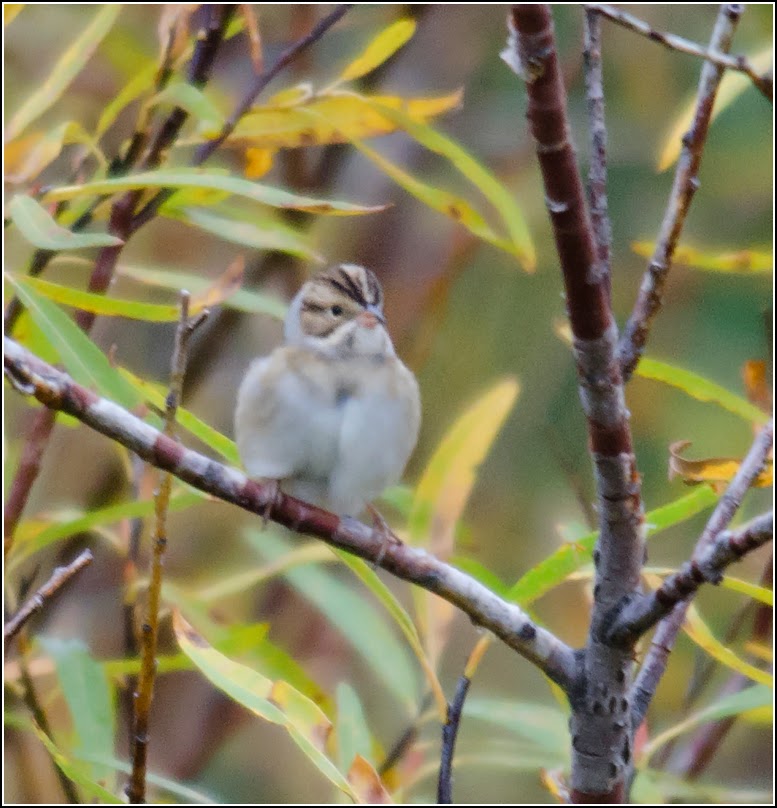I am back in Nova Scotia for just over a week to visit with Laura and her family. This is my 12th visit to Canada's east coast over the last six years, and my sixth visit over Christmas/New Years. Despite having a population under a million, Nova Scotia has certainly puts its name on the map when it comes to rare birds in Canada. Some of the rarest species that have ever been seen in Canada hail from Nova Scotia - Brown Shrike, Broad-billed Sandpiper, Bermuda Petrel, Tundra Bean Goose, and Western Reef-Heron are just a few of the goodies that have been discovered in Canada's Ocean Playground.
I must have timed this visit out east perfectly, as within two days of my arrival the news broke that a female Eurasian Kestrel had been photographed at Hartlen Point near Dartmouth, N.S. by Kyle Shay. With only about 20 total records for North America, this was a true mega!
I was not able to make it out to the location before dark when I first heard the news, but the next morning I was on site at dawn, hoping to relocate it. Unfortunately the bird did not show, perhaps due to the persistent steady rain all morning. However, the kestrel was seen by others before dark (at a slightly further away location), so Laura and I made plans to return today.
We arrived late in the morning to see a crowd of birders already assembled along Shore Road, about a kilometer from Hartlen Point. Apparently the bird had just been observed prior to our arrival! Almost immediately one of the 30 or so birders spotted the falcon, but by the time Laura and I realized that people were looking at it, the bird was far away down the coast. We watched the black speck until it disappeared to the east, but given the distance we were not confident counting the bird. I mean, the only field mark I could see what that it was a bird somewhere in size between a pigeon and a crow. Not ideal.
Fortunately, we would not be waiting long for an encore performance. After an hour of hiking around the general area, we were walking back to our vehicle along Shore Road when some nearby birders spotted the kestrel heading our way over a ridge. With the sun at our backs, the kestrel spent about 5 minutes hovering above the long grass, looking intently for rodents. After one failed attempt, it successfully caught a vole and took off to the north to enjoy its lunch. I snapped off a few photos of the encounter, but my camera/lens was having focusing problems, leaving a lot to be desired. Oh well! The views were killer, even if the photos weren't, which is all that really matters! I can always go back to Europe where its a lot easier to photograph them...
 |
| Eurasian Kestrel - Hartlen Point, Halifax Regional Municipality, Nova Scotia |
Compared to American Kestrel, Eurasian Kestrel is larger and paler. Diagnostic is the single "moustache" shown by Eurasian, while American has two. Eurasian Kestrel is the default kestrel across much of Europe, Asia and Africa and can be quite common within its range. However, it is quite rare in North America with only about twenty total records. Of these, about half are from islands in western Alaska. Canada has two previous records - one in British Colombia in 1946, and one along the Nova Scotia/New Brunswick border in 1988.
 |
| Eurasian Kestrel - Hartlen Point, Halifax Regional Municipality, Nova Scotia |
This Eurasian Kestrel is without a doubt the rarest bird I have seen in North America so far, and a great way to close out 2014. Our day was not done and we decided to hit up a few more locations before driving back home.
A quick walk at MacCormack's Beach failed to turn up much of interest, though I snapped a few photos of a Rock Pigeon as it obligingly sat amongst some rocks along the beach. This is one species that I have never really photographed before.
 |
| Rock Pigeon - MacCormack's Beach P.P. |
We also visited Rainbow Haven Provincial Park to see what we could come up with. Often a little flock of Yellow-rumped Warblers over winters here and sometimes interesting birds will join up with them. Despite not seeing much for the first part of the hike, we eventually came across a little group of American Tree Sparrows and Yellow-rumped Warblers. As we were sorting through them, a Bohemian Waxwing trilled from the top of a White Spruce several times before flying off - my first for Nova Scotia.
Laura also spotted a lone swallow over the marsh, which upon closer inspection revealed itself as a Tree Swallow. This bird should be much further south than central Nova Scotia by now! It's not every year that one lingers into December in Nova Scotia. Given the relatively mild conditions during the first part of this winter it is not entirely surprising that this one is surviving.
As we were arriving back at the car we encountered another little mixed flock of Black-capped Chickadees, Golden-crowned Kinglets, and Yellow-rumped Warblers. Mixed in were two oddballs for the time of year - singles of Ruby-crowned Kinglet and Orange-crowned Warbler. Not a bad way to finish off a great half day of birding!











.jpg)








.gif)



.jpg)





















